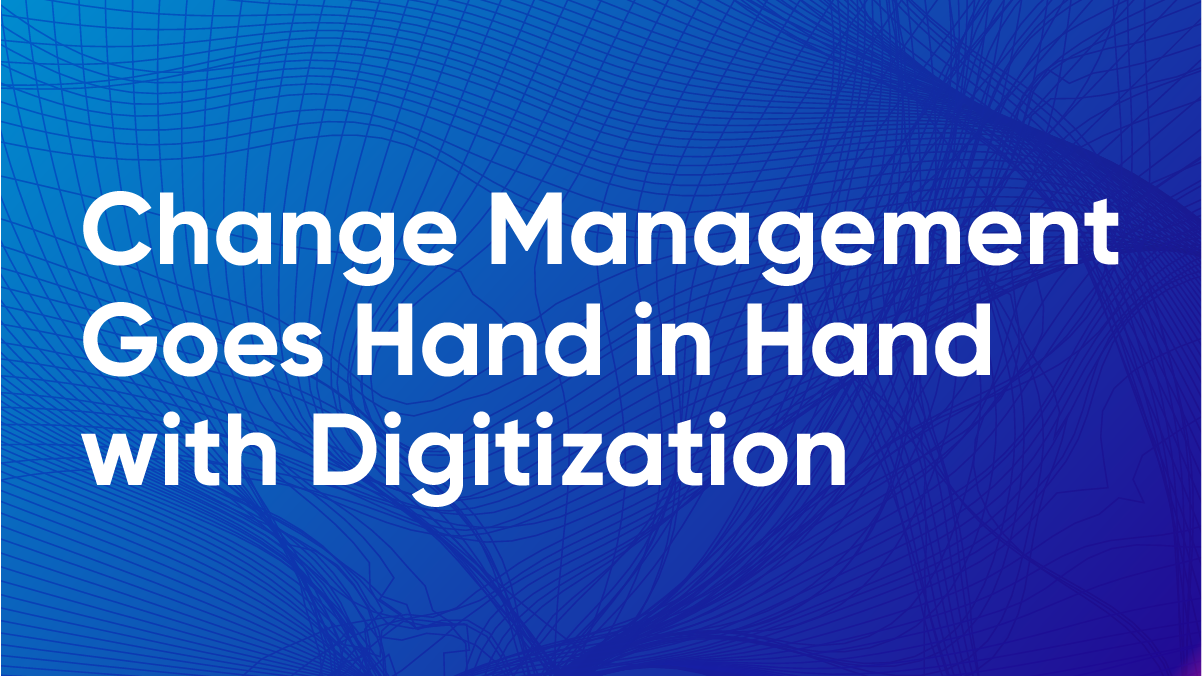When an organization decides to digitize, there are many different considerations. One of the most significant points to remember is how to help your employees through the process. Change management should accompany any large digitization process to help employees learn, embrace, and start working the new way.
Learn more about how to implement a change management program alongside your digitization project in this article. When you’re ready to start your digital journey, contact us at Snapsheet for more help.
Change Management Models Help Organizations Drive Change
Making any large-scale change requires lots of preparation. One of the things to consider in your planning is how to help your employees with the change. Even if they are excited to digitize, change can be challenging especially for those who are most impacted.
That’s why adding a change management program to accompany your digital project is a best practice. When employees embrace change and feel a part of it, they will adopt the new way of working more quickly. Change can be more successful when everyone buys in.
Try using one of these popular organizational change management models to guide you as you help your employees adopt digitization.
ADKAR
A popular change management model, ADKAR promotes individual change to drive organizational change. The acronym stands for the five outcomes people need to achieve to make a change:
- Awareness of the need to make a change
- Desire to change
- Knowledge of how to change
- Ability to change
- Reinforcement of the new way of working
Organizations using ADKAR can expect to change because individuals change their behavior. Going through the five steps of the model should lead to sustainable organizational change.
Kotter’s 8-Step Process for Leading Change
Next up we’ll review another popular change management model, Kotter’s 8-step process. Dr. Kotter spent four decades helping organizations drive change and he organized his observations into his 8-step model.
Kotter’s steps are:
- Create a sense of urgency with a mission or vision statement describing the need for change.
- Build a guiding coalition of people to steer the change.
- Form a strategic vision and initiatives to clearly explain to people what’s in it for them and how the future will be better than the current state after they make the change.
- Enlist a volunteer army to drive progress and scale change.
- Enable action by removing barriers and obstacles so people can be successful.
- Generate short-term wins and celebrate!
- Sustain acceleration and push harder when you win — momentum builds on itself.
- Institute change to become a habit among your team.
Kotter’s method is helpful to use when you want lasting change accepted by your team.
Unfreeze, Change, Refreeze
A simple change management method introduced by a social scientist named Kurt Lewin is called Unfreeze, Change, Refreeze. Picture a square ice cube. To get the ice cube from its current square state to a different shape, you’d have to unfreeze it, change the shape, then refreeze it. That’s the basis of Lewin’s model:
- Unfreeze. Break down the current structure to prepare for change. Unfreeze — or undo — the way you’ve always done things and explain the need for change.
- Change. Next, take time to transition and change. Show people what’s in it for them and how they will benefit from the change.
- Refreeze. Last, once people have begun to change and work in a new way, you want to solidify the changes. This is the stage for internalizing and sustaining the change.
Lewin’s three simple steps provide a clear framework for organizations to help employees manage change.
Digital Projects Need Change Management
When it comes to digitization, it’s critical to manage the change along with the digital project.
Digital projects affect many employees.
It takes many different people and departments to make a large-scale digital project successful. With so many people involved, managing the change becomes critical. If some key stakeholders are on the fence — or don’t support the change — they could derail the project before it even begins.
Digital projects can drive culture change.
Digitization will change how people work and how they collaborate with each other. Some processes will be automated, and different workflows will condense. These changes will affect people in many ways — some may feel threatened as their job changes, and others may enjoy the new streamlined way of working.
One digital project may lead to the next.
Once your team starts thinking differently about innovation and the way they work, they will find more opportunities to digitize. As your organization shifts to one that embraces innovation and creativity, having a change management process in place becomes even more important. Employees will need continued support as they move forward and drive success.
Drive Change With Snapsheet’s Virtual Technology Solutions
Our solutions are designed to streamline workflows and automate processes and they go hand in hand with your change management model. Reach out today for your free demo to see how we simplify claims, appraisals, and payments.
Let’s work together to drive change and digitize your organization with our virtual technology for a virtual world!
External Links:

Subscribe for Updates
Top 5 Reasons Why You Should Subscribe
-
#1
Stay up-to-date on industry news and trends
-
#2
Learn about claims management best practices
-
#3
Gain insights into customer behavior and preferences
-
#4
Discover new technologies and innovations
-
#5
Engage with a community of industry professionals
Appraisals
Reduce cycle time and improve appraisal accuracy
Claims
Claims management with our modular, end-to-end solutions
Payments
Deliver payments effortlessly with automated tools and no-code workflows